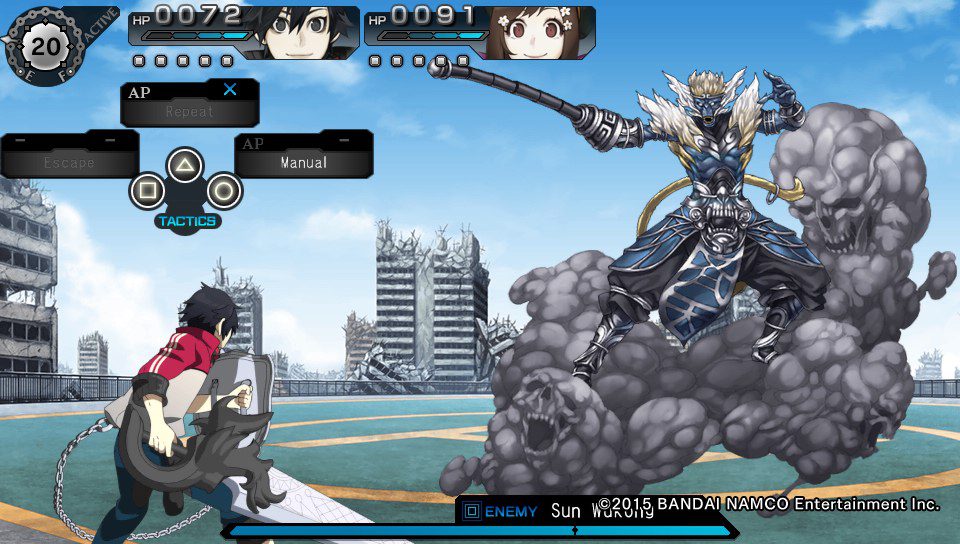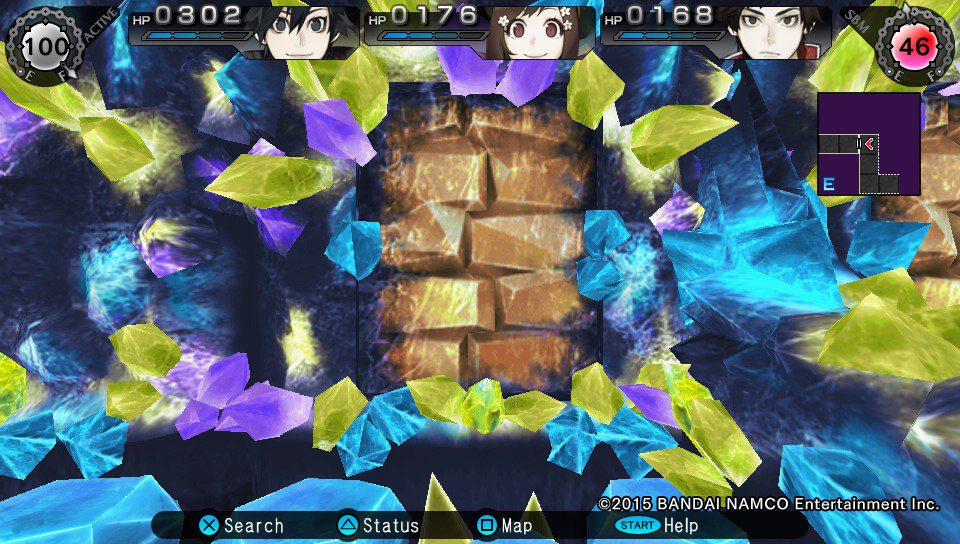Here of late it seems like I’m always playing one of two types of games, Metroidvania or dungeon crawler. Not sure how that keeps happening. . . The game up for review this time around, Ray Gigant, is a dungeon crawler with first person exploration mechanics similar to Etrian Odyssey or the game we recently reviewed, Stranger of Sword City. Where Ray Gigant differentiates is its hand drawn sprites, anime style, and rhythm based ultimate attacks.
Ray Gigant takes place in a destroyed, desperate earth, with the story centering mostly in Tokyo. Beings known as Gigants appeared out of the blue, demolishing city after city. Thus the surviving cities create a school with talented, special students who can use special weapons and them put them on the front lines of Gigant emergence. Players will take on the mantle of Ichiya Amakaze, a brash and often clueless boy whose body has been invaded by a Yorigami, a symbiotic lifeform known as Habakiri. Being fused with Habakiri, Ichiya is special, as the most of the other fighters wield copies of a Yorigami, known as Kurogami, lacking the true strength of an original, sentient being.
The game’s story revolves around fighting Gigants, searching for their source and weakness. Most of the driving events involve figuring out more and more about Gigants and the state of the world. Most of the RPG elements come into play inside of dungeons, where the player will map out the level and fight smaller Gigants along the way. This is the main meat of the game, battling enemies in a turn-based tactical manner, gathering resources to level up, and steadily growing stronger.
The other half of the game is a visual novel, where most of the story takes place. Players will also have to make decisions at various points, which does affect the story slightly. For instance, saying the right thing to one of the several girls seems to unlock what I assume will lead to romance, which adds a level of replayability. All of the characters have fairly interesting designs and premises. Kazuomi, the mage somber type, shows off his soft side to his little sister, while also slowly opening up to Ichiya and his forward methods. Mana, the main female lead, loves to cook and is often the voice of compassion in stressful situations. Nothing too complex going on with their characters, but they are a charming bunch.
Ray Gigant relies on the visual side of things more than anything, as the writing isn’t anything worth uplifting and often fits into anime cliches. Even with that, the drive of fighting Gigants kept me pushing deeper and deeper into its world, eager for its later complexities and secrets.
The visuals are incredibly crisp on the Vita, as each character is well-designed and is animated beautifully. Boss battles are especially interesting, as some of them play with perspective in dynamic ways. One of the early bosses, a giant Kitsune beast, has the heroes stationed at various points of the battlefield. This adds variety to the fairly simple battle system. Finding all the enemy types and finding the best way to take them out is a ton of fun and doesn’t become overburdening.
Ray Gigant also doesn’t overwhelm its players, as many RPGs of the same type do. Each concept is introduced slowly, and there is a tutorial section for forgetful players. This does affect the pace of the early sections of the game, but it can be overlooked with the great visuals and catchy tunes.
The music of Ray Gigant goes from piano ambience for story sections to upbeat jazz in battles. This is heightened by how the ultimate attacks (known as Slash Beat Mode) work. Characters transform to a full synchronization with their weapon and the battle breaks away to a rhythm game that has the player tap the circle button to the beat of the song. Doing well makes the attack more effective and the flashy animation is a joy to watch. Hacking away at bosses or a tougher enemy never gets old.
Another aspect of the battle system that unlocks later is parasitism. This builds up as a percentage over time, resetting after a level up. Once this bar is full, the characters break into a rage in which attacks use their own health instead of the ability points used normally. This does make attacks a bit stronger, so proper balance of the parasitism is a must for victory. Going into this mode at the wrong time can leave a party wiped out, resetting back to a previous save. Save often.
Unlike most games in this genre, Ray Gigant isn’t as challenging. A lot of dungeon crawlers have crippling difficulty that can turn away most players, rewarding those to learn the ins and outs of the combat system. Ray Gigant has fewer actions to perform, as players only have a set amount of commands they can set. For instance, in the beginning only three actions can be performed, each with its own AP cost to use. As players unlock abilities, levels, and weapons with resources (similar to a basic version of Final Fantasy X’s Sphere Grid) more actions become available to set. The way my party was set up Isaya was a tank, having high defenses with taunt to draw enemy attacks. This let Mana, the archer, deal crazy damage with precise strikes, while Kazuomi capitalized enemy weaknesses with spells and healing when necessary.
It didn’t take long for me to become attached to these characters, not because they had deep stories and character development, but because they were fun to customize, even if the system was incredibly simple compared to most RPGs. It’s refreshing when a game focuses on what it does best, rather than trying to do a multitude of things. Battles are easy to pick up and master, boss battles are a spectacular sight to behold, and the themes of the game are interesting. It’s setup puts me in the mind of Neon Genesis Evangelion, as the Gigants appear like demons from Japanese culture, but without the giant naked metaphors of Evangelion.
Overall, Ray Gigant is by no means one of the best RPGs, even in the Vita’s small library. Yet, it’s charming and its style is unique enough to warrant a playthrough.








